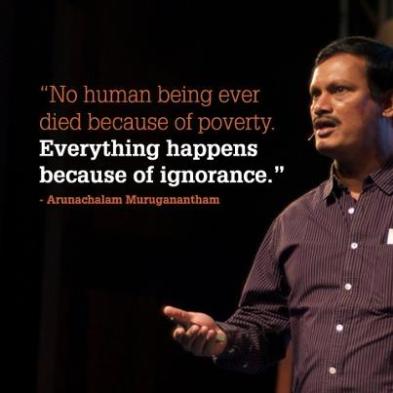Ramona Pinto
M11040
Narendra Dabholkar was a man of contrasts. Although, an atheist, he treated all religions with respect and followed the philosophies of Gandhi. He believed in the power of Indian spirituality even as he campaigned from village to village across Maharashtra exposing conmen and trying to spread scientific awareness among villagers who were exploited by scheming godmen and politicians He advocated scientific thinking, but he was a vegetarian and a teetotaler.
Born to progressive Brahmin parents, Dabholkar was a medical doctor by qualification, an editor and writer by profession and an activist by choice. Though he is known for his work against eradicating blind faith and superstition, he was also an advocate for women’s rights; an environmentalist and criticized the caste system.
Dabholkar started his social work by volunteering to be an activist for the ‘One Village, One Well’ campaign initiated by well-known socialist leader Dr. Baba Adhav. This campaign formed the foundation for his ideals, which later echoed throughout his career as a social activist. He soon founded the Committee for Eradication of Blind Faith in 1989, (MANS in its Marathi acronym), which now has 180 branches in the state. Their mission was simple, he along with his activists would visit villages, confronting the babas, sadhus and other “godmen” and exposing their scams. Soon enough, he was appointed editor of a weekly newspaper Sadhana started by Sane Guruji, which operated from his MANS office.
Dabholkar believed in teaching by example. He built his house facing south, contrary to the popular belief that houses must face north. He named his son Hamid, after the social activist Hamid Dalwai, raising eyebrows among Hindu fundamentalists. Even his funeral pyre was lit by his daughter. He was always meticulous in his work – from organizing demonstrations and performances, to exposing so-called magic and tantra, to preparing legislative drafts. He had colleagues and comrades, not ‘followers’. His discussions with volunteers used to be open sessions. They would relate terrifying tales from their villages – which even the police were not aware of or had often connived in.
He exposed cases of black magic to cases of possession, and also expressed dissent publicly against millionaire ‘godmen’ like Sathya Sai Baba, and Asaram Bapu. So strong was his belief against superstition that he promised a sum of 21 lakhs to any baba or godman who could replicate the miracles that they performed under scientific conditions and observation. The sum remains unclaimed to this day.
Over the course of time though, His efforts bore fruit slowly. And as they did, politicians and right-wing extremists began taking notice of him. During many instances, Dabholkar was attacked by goons and once almost doused with kerosene and set on fire. Many people accused him of wanting to destroy all religions; however, he only condemned the exploitation on common people.
On august 20th, Dabholkar was assassinated near Pune’s Shanivaar Peth. He was shot at, four times in the head, neck and chest by men on motorbikes. This at a time when, the state government is dragging its feet to pass the an anti-superstition bill called ‘Maharashtra Prevention and Eradication of Human Sacrifice and other Inhuman Evil Practices and Black Magic’ which was put forward by Dabolkar.
His murder was the logical and ideological culmination – conspired, coordinated and executed in the same way, Gandhiji was killed. Nathuram Godse belonged to Pune; 65 years later Narendra Dabholkar was assassinated in Pune.


 Ajay Chaturvedi is a living example for the adage, “Climb mountains not so the world can see you, but so you can see the world.” Backpacking in the Himalayas made the banker quit his more-than-comfortable job at Citibank to translate his deep sided realization of rural India into work that would empower the demographic.
Ajay Chaturvedi is a living example for the adage, “Climb mountains not so the world can see you, but so you can see the world.” Backpacking in the Himalayas made the banker quit his more-than-comfortable job at Citibank to translate his deep sided realization of rural India into work that would empower the demographic.